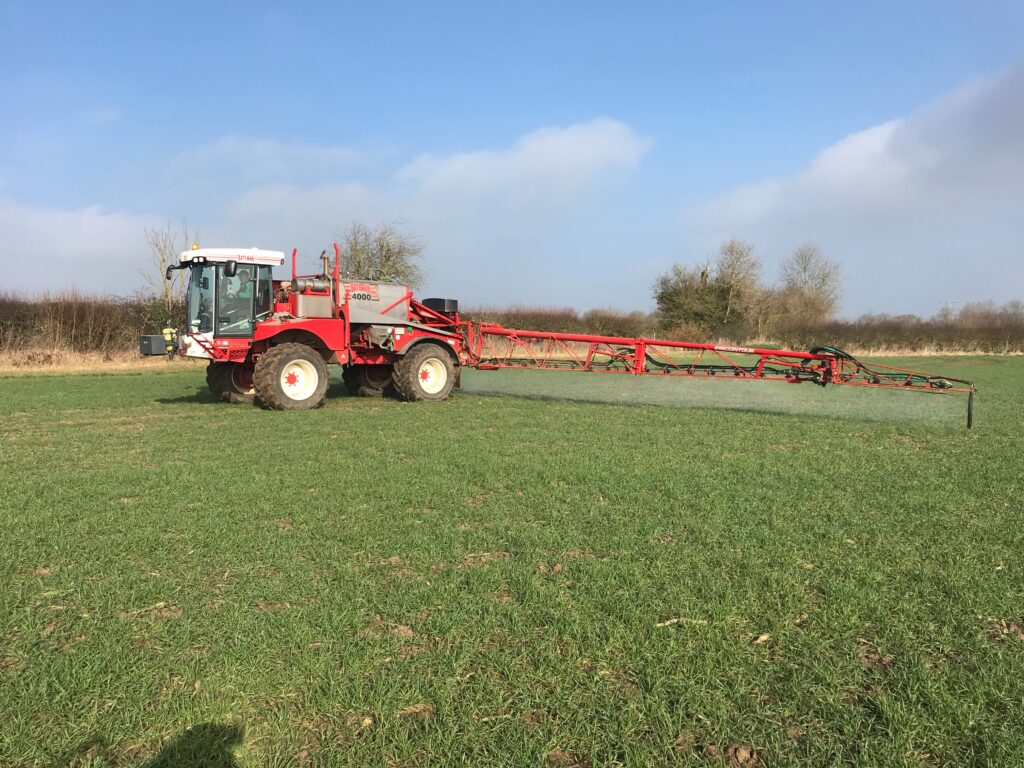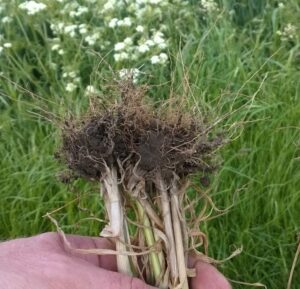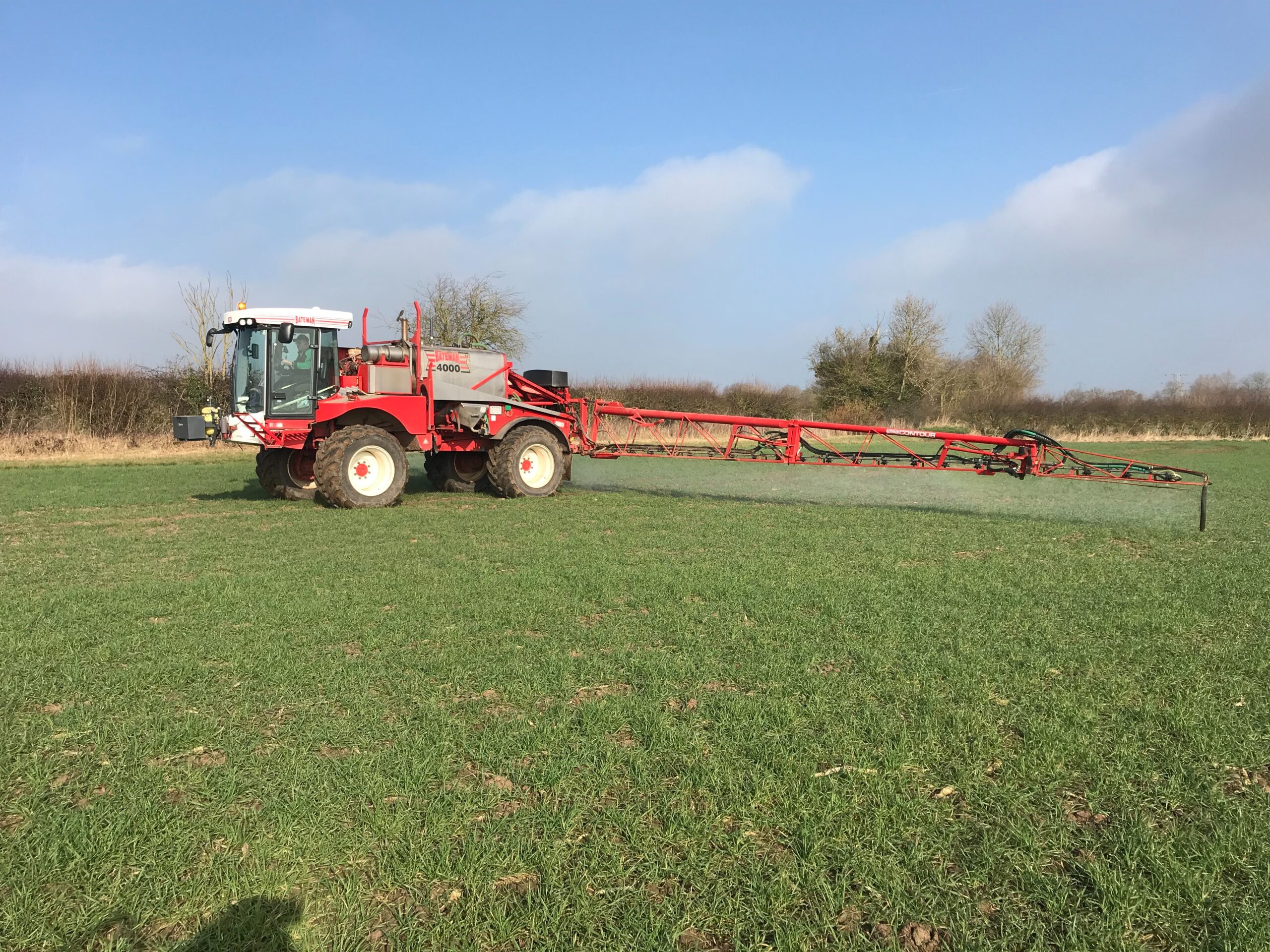Life in Life Scientific…
Product News:
In those areas where machinery travel is possible, growers are considering their herbicide options.
Cintac and Niantic contain mesosulfuron-methyl and iodosulfuron-methyl-sodium, two highly active sulfonylurea herbicides for the control of black-grass, wild oats, rye-grasses, meadow grasses, common chickweed, mayweeds, charlock and volunteer oilseed rape in winter wheat. The higher dose of iososulfuron-methyl-sodium in Cintac will also have activity on bromes.
For more information including product label, safety data sheet and compatible tank mixes see the Life Scientific website https://lifescientific.com/products/ or download the App to get product information direct to your phone.
To get the best performance from these herbicides correct timing and application is key. The following sections give advice on application best practice.


Application Advice for Black-grass Control
Spray applications expert Tom Robinson has been trialling Cintac for the past two years to understand how to get the maximum weed control by using different application techniques.
The trials looked at levels of black-grass control using four mainstream nozzles and three different boom heights.
With many growers looking to start their herbicide programmes in spring as they were unable to apply any autumn products it will be vital to get the best performance possible from any products.
Four different nozzle types were tested to see how they influenced efficacy of Cintac against black-grass.
The Guardian Air 110˚ reduced drift, Traditional Flat Fan 110˚ with medium spray quality, a Flat Fan 80˚, giving a higher energy output and a Defy 3D set to alternate forwards and backwards along the boom.
The best black-grass control was achieved with the nozzle which gave the greatest spray deposition on all four surface areas of the water sensitive targets. The Defy 3D nozzle gave the best all-round coverage at both 50 and 100cm above the crop.
The Importance of Boom Height

The boom height of the sprayer is incredibly important to get maximum efficacy from Cintac, or any product being used. For all four nozzle types tested in the Cintac application trials, the boom height was important, although the Guardian Air was the least sensitive to the different heights.
From 50 to 100cm the most consistent performing nozzle decreased coverage of the water sensitive paper by 10% and none of the nozzles tested had more than 8% coverage of the front vertical side of the targets when the boom height was set to 100cm above the crop.
Combined coverage on all surfaces from the 4 nozzles fell from 26% at 50 cm nozzle height, to 19% at 100 cm a drop of 35%. The figures illustrate the importance of keeping the nozzle at a height no greater than 50 cm above the crop to get the best kill of black-grass.
Using headcount and yield loss data from Dr Stephen Moss, (formally Rothamsted Research), using the Defy 3D nozzle over the Guardian Air would give an increase in yield of 0.7 tons/ha.
This season, with the variation in control of yield robbing grass weeds such as black-grass, every care must be taken to preserve profitability and minimise seed return for the following year.
Best Practise: Apply Cintac in 200l/ha at not more than 12km/hr using a Defy 3D (05 or 06), nozzle height should not be more than 50cm above the crop.
Sudo Mor – New PGR From Life Scientific
Sudo Mor contains 250g/l trinexapac ethyl and is a PGR registered for use on all varieties of winter and spring wheat, barley, oats, rye, triticale and ryegrass seed crops
Sudo Mor is a cost-effective crop management tool which protects and enhances yield potential, and comes to market at a time when growers are under pressure to scrutinise input costs whilst not compromising yields.
PGR’s will be an essential part of the spray programme this spring; we had a kind autumn, crops went in well and so far, the winter has been kind, so crops are coming into the spring growth period looking lush, forward and full of potential.
It is important this potential is managed correctly, which means ensuring lush crops are prevented from lodging.
There are three key factors that impact lodging risk.
Size of the canopy in the spring is a critical indicator of crop development and lodging risk. This can be measured by its green area index (GAI).
The best way to achieve a stable high yielding crop potential, in the lusher forward crops is to establish a good base. Like good building design, foundations are key to a stable structure, so early PGR’s and a continued programme of PGR’s will give the best chance to maintain a standing crop through the season.
Remember a higher yielding crop will produce heavier ears. Heavy ears put weight on the stem so the higher the yield potential the greater the risk. Estimates are for every extra tonne over 9t/ha, lodging resistance Is reduced by 0.5 points.
Varieties also have different resistances to lodging; this comes down to differences in height, tillering capacity, stem strength and speed of establishment.
Varieties with a score of 7 or less on the AHDB Recommended List should be considered at risk of lodging and should be managed accordingly.
How does Sudo Mor work?
As a contact acting PGR, Sudo Mor, inhibits the production of gibberellic acid and shortens the internodes, reducing lodging on cereals and grasses, and has a wide application window, from growth stage 30-39 (in winter cereals).
When used at GS30, the PGR helps root development and increases root plate diameter. This prevents lodging and also increases the plants ability to absorb water and nutrients from the soil.
Early use will also hold back and thicken the main stem, encouraging side tillers and even up the crop. By temporarily reducing the rate of stem extension with a PGR, such as Sudo Mor, it means more of the plant resources can be diverted to thickening the stems and promoting root growth. For more details including label and compatibility information click here
Kipota Equivalence
We took advantage of the fact that NIAB had an abundance of wild oat seeds after working with us on the wild oat resistance project during last summer and asked them if they would also carry out efficacy trials on Kipota.
Kipota, containing 240 g/l clodinafop is our reverse engineered Topik. A herbicide with useful activity on a number of grass weeds but is particularly strong for wild oat control.
Winter and Spring wild oat species were planted by NIAB and grown on in glass houses for evaluation.
Both Kipota and Topik were applied to plants at a rate of 0.125 l/ha plus oil. Plants were also assessed for fresh weight per pot and percentage reduction after application and plant mortality per pot and percentage control. The photo above, taken at 32 DAA, along with the data collected shows no difference between the 180 pots in the trial.

